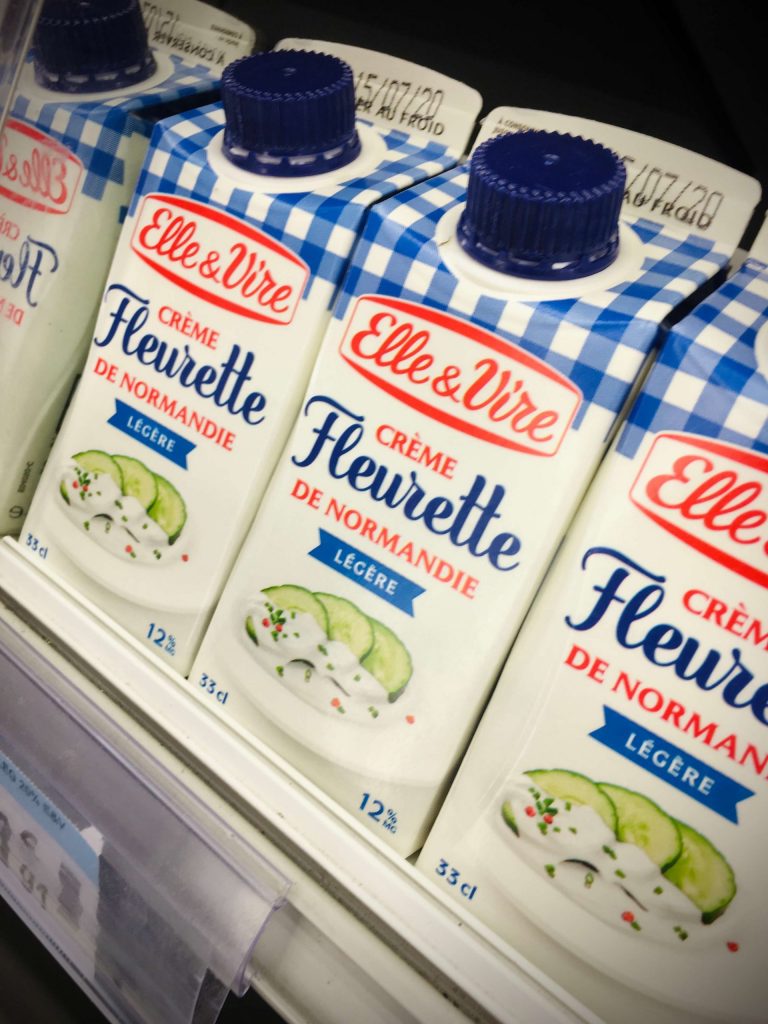
The French j’adore dairy.
From butter to cream and all manner of produits de lait in between, they don’t shy away from slicing off a not-so-small small slab of cold beurre for their freshly procured baguette, still warm from the morning bake. They butter-up their croissants (which are already comprised of approximately 112% butter) and café au lait is a ritual Parisians love to enjoy on mornings they have une minute.
Yet you won’t find half & half in a French dairy case.
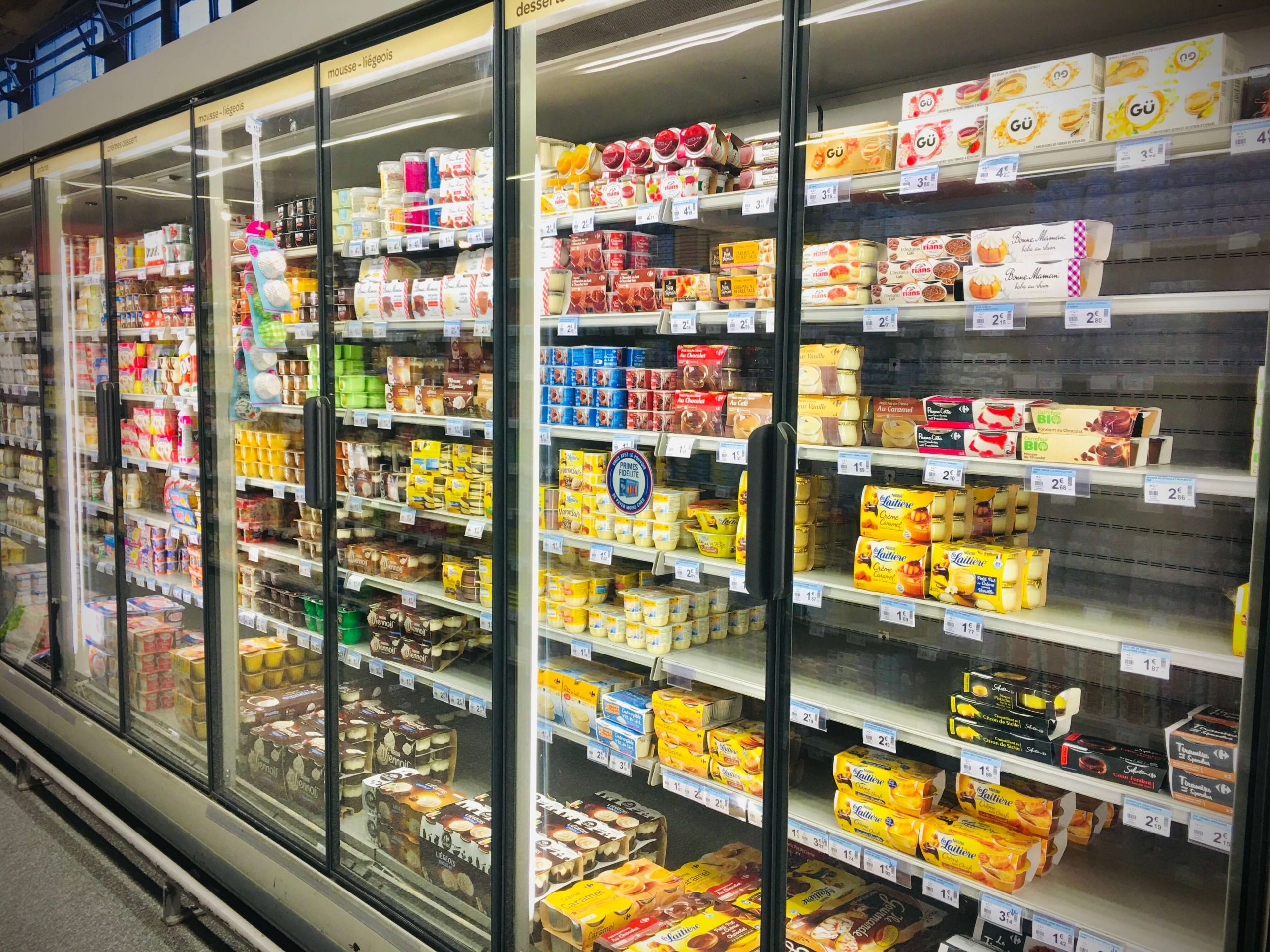
Therein lies the task of attempting to decipher the myriad labels on the bazillions of available dairy items. Crème isn’t merely cream. There are percentages to comprehend. There is viscosity to consider. There are levels of sweetness and tang, locales and provenance to consider. And within all of that, the variety of animal that was milked in the making-of said dairy product, whether it’s milk, cream, cheese, yogurt, fermented milk, fromage blanc, etc. etc. etc.
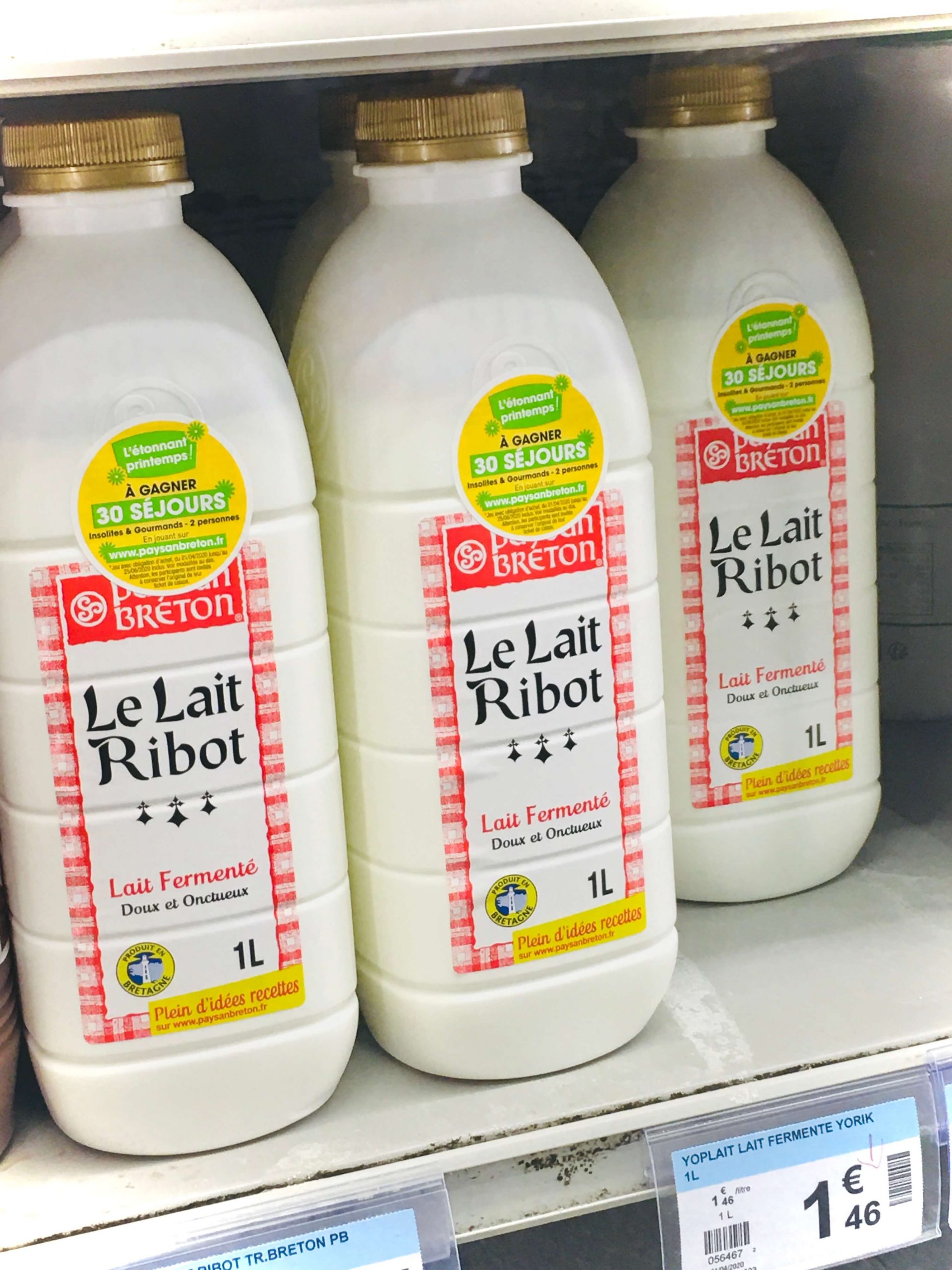
You would think that with that depth of selection, finding the usual American coffee addition would be a cinch.
Oh, mais non. And don’t make the mistake of trying charades with a grocery clerk while muttering in French caveman language something along the lines of what sounds like an entirely reasonable and mostly obvious fashioning of attempted French;
“je voudrais crème demi et lait demi s‘il vous plaît”
while making a motion not unlike you are chopping a downed log in half. Even amicable and patient Parisian grocery store staff will get it wrong and you’ll end up wondering why your double espresso stays mostly dark brown even though you’ve poured a kilometer’s worth of dairy product in it (see lait demi ècrèmè below).
If you want to add some dairy to your cup-of, whole milk is available. It is called;
- Lait entier and it usually has a red cap
If you prefer a low fat add-in, you’ll want;
- Lait demi ècrèmè with the blue cap
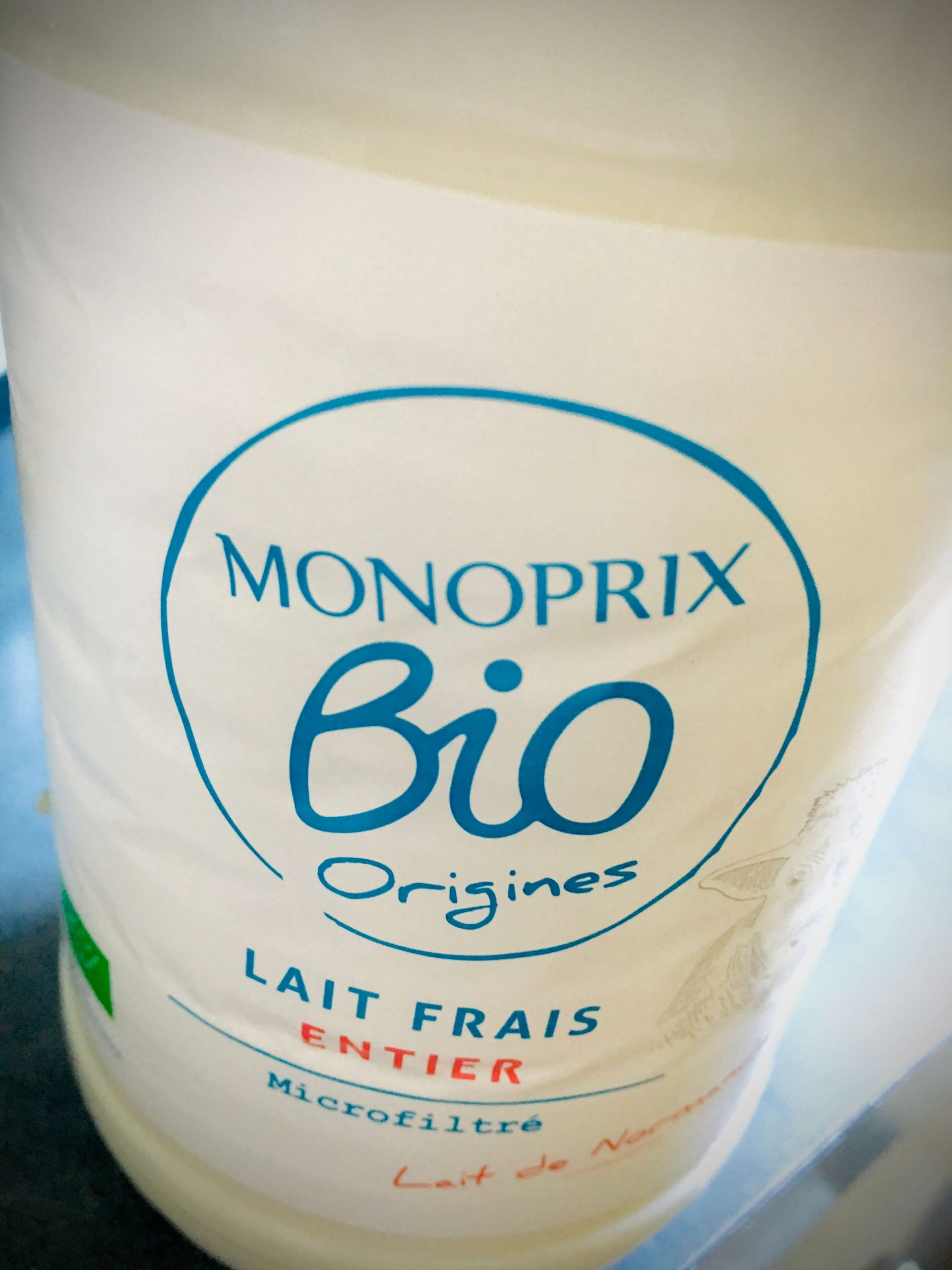
This is where it gets tricky.
If you like your coffee creamy, you can go all out with;
- Creme légère fluide
- Creme légère
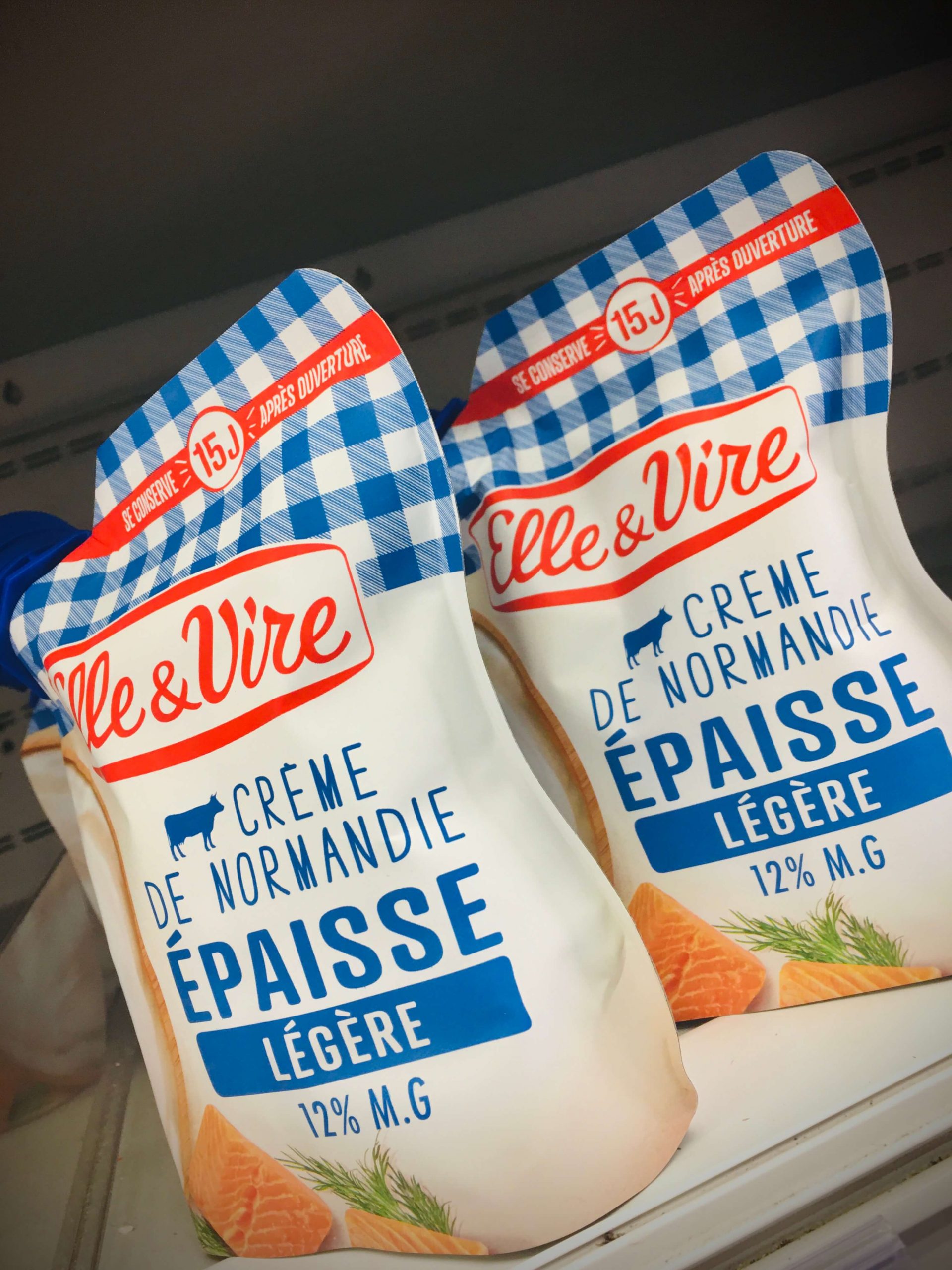
It gets incredibly confusing because when you look at the fat content, it can be higher on products that are more viscous and liquidy than on some products that are thicker and less viscous. I generally try to get 30% crème fluid and will add some milk to lighten it up a bit. Sometimes I just drink my coffee extra-creamy. You also have the benefit of drizzling some sweet crème on whatever you feel needs a little extra yummy. Parisians wouldn’t argue and you might even earn some Parisian cuisine cred.
Just about every type of milk and cream is available both fresh (frais) or in sterilized sous-vide containers and the quality is quite high, but what would one expect from a country where there are entire fridge cases displaying ready-to-eat crème caramels, pot de creme, riz au lait and finish-at-home crème brûlée.
And just wait ’til you get a load of the cheese case.

